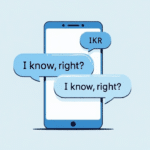The English language is full of tricky spelling rules and exceptions. One of the most common errors people make is confusing “receive” with “recieve”. Even though the difference is small, it’s important to get it right, especially in professional writing, to avoid errors that could undermine your credibility. In this article, we will explore why receive is the correct spelling, why people commonly misspell it as recieve, and tips for always spelling it right.
What Is the Correct Spelling: Receive or Recieve?
Receive is the correct spelling. Many people mistakenly spell it as recieve due to confusion with the rule “I before E, except after C.” This rule is meant to help people remember how to spell words like believe and piece, but receive is one of those exceptions. The rule should be applied to words where the I comes after the E when the letters follow a C, but receive flips this pattern.
The correct spelling, receive, follows the spelling rule for the C sound, which is pronounced with an E after it. Even though the “I before E” rule is helpful in many situations, the exception for words like receive is important to remember. In receive, the E comes first. This confusion often leads to the misspelling recieve, as people subconsciously follow the pattern they know. To help clarify, let’s take a look at how both versions appear in context:
| Correct Spelling (Receive) | Misspelled Version (Recieve) |
|---|---|
| “I will receive your feedback tomorrow.” | “I will reciev your feedback tomorrow.” |
| “She asked to receive a gift for her birthday.” | “She asked to reciev a gift for her birthday.” |
As you can see, the misspelling recieve can significantly affect the clarity of the sentence, making it appear unprofessional or careless. Therefore, it’s crucial to make sure you’re using receive in your writing.
Why Do People Commonly Misspell ‘Receive’?
One reason for the confusion is that English is full of spelling inconsistencies and exceptions. People often learn the “I before E” rule early in their education, so when they encounter the word receive, their minds automatically follow the pattern, even though it’s an exception. The brain tends to default to recieve because it sounds more natural when you pronounce the word.
Another reason people make this mistake is because of the influence of similar sounding words like believe, achieve, and relieve. These words follow the traditional I before E rule. Since receive is pronounced similarly, it’s easy to assume the same pattern applies. However, this is a perfect example of how English can mislead learners with its complex rules and exceptions.
To make this clearer, let’s consider the following example:
- Believe (I before E)
- Achieve (I before E)
- Receive (E before I)
Notice the confusion that can arise from the similarity in pronunciation and structure. All of these words are related and sound somewhat alike, so it’s no wonder that receive often gets misspelled as recieve.
How to Remember the Correct Spelling of ‘Receive’
There are several effective ways to remember the correct spelling of receive. The first and most common method is using the well-known mnemonic “I before E, except after C.” While this isn’t always true, it helps you recall that in words where the E follows the C, such as in receive, the rule applies.
Another simple memory trick is to associate receive with the word receipt. The “C” in both words is followed by an E, making it easier to remember the correct order. You can even picture yourself receiving a receipt at the checkout counter. The connection between the two words can help you avoid spelling errors in the future.
For example, imagine you’re standing in line at a store. You receive your receipt from the cashier. The word receipt clearly shows the C-E pattern, reinforcing that receive should follow the same structure. Visualizing this connection will make it easier for you to recall the correct spelling when you write.
To further strengthen the memory of this rule, you can break down the word itself: Receive = Re (prefix) + C (letter) + E + I + V + E. Saying it aloud may also help reinforce the right order, as saying the word slowly and clearly can help in avoiding mistakes.
The Meaning of ‘Receive’ and How to Use It in Context
The word receive is a verb, and it generally means to get or accept something. You can receive gifts, feedback, or information. It is a crucial part of many conversations, both formal and informal. For example, you might receive a letter in the mail or receive an invitation to a party.
It’s also used in formal contexts. For example, in business, you might receive a free trial document that explains the terms of a service. Or in an academic setting, a student could receive feedback from a professor on their assignment. Understanding the meaning of receive helps to clarify its use in various situations. Below are a few examples of sentences with receive:
- “I will receive your email tomorrow.”
- “We received excellent feedback on our project.”
- “She’s excited to receive her promotion.”
By using receive correctly, you help maintain clarity and accuracy in your writing, which is essential for effective communication.
The Misspelling: ‘Recieve’—Why It Happens and How to Avoid It
Recieve is the most common misspelling of receive. Many people make this mistake because of the similarities to words like believe or achieve, which follow the I before E rule. However, the I before E rule does not apply here. The recieve error is also influenced by the way people naturally pronounce the word.
To avoid this mistake, take the time to learn and remember that receive follows a specific spelling pattern due to the C in the word. By reinforcing the “I before E, except after C” rule and associating receive with other similar words like receipt, you can prevent this spelling error from cropping up in your writing.
Case Study: How Recieve Was Corrected in a Business Email
Consider a case where a professional emailed a client with the following line:
- “Thank you for your recieve of the new terms.”
The error was caught by the client’s assistant, and the email was sent with the correct spelling:
- “Thank you for your receipt of the new terms.”
This case highlights how simple errors, like spelling recieve instead of receive, can impact the professionalism of your communication. Attention to detail matters, especially in business emails, where clarity and accuracy are essential.
Spelling Tips for Receive vs. Recieve
Here are some spelling tips to ensure that you use the correct spelling every time:
- Mnemonic: “I before E, except after C.”
- Visual aid: Think of a receipt when you think of receive.
- Practice: The more you write and read receive, the easier it becomes to remember the correct spelling.
- Use a dictionary: When in doubt, check a reliable dictionary to confirm the spelling of unfamiliar words.
- Writing tools: Use writing assistance tools, such as spelling checkers or proofreading services, to catch common mistakes.
By following these tips, you can easily avoid the confusion between receive and recieve. Remember, these small spelling mistakes can affect your professional writing, so it’s worth investing the time to learn the correct form.
Proofreading Tips to Avoid Misspelled Words Like ‘Recieve’
When writing, it’s crucial to proofread your work carefully to catch common mistakes like recieve. One of the best ways to spot these errors is to slow down and read your text out loud. This forces you to pay closer attention to every word, making it easier to spot small mistakes.
Another spelling advice is to look for common spelling errors like recieve when you’re editing documents. Keep a list of frequent errors you make and refer to it while proofreading. Editing services or grammar help tools can also assist you in spotting spelling mistakes that might have gone unnoticed during the writing process.
Table: Common Errors in Professional Writing
| Error | Correct Spelling |
|---|---|
| Recieve | Receive |
| Accomodate | Accommodate |
| Definately | Definitely |
| Seperately | Separately |
Using proofreading tools and reviewing your document thoroughly can help prevent these and other spelling mistakes in professional documents.
Common Spelling Errors in Professional Writing
In professional writing, clarity and writing accuracy are paramount. Spelling errors, like using recieve instead of receive, can affect the overall writing quality and may even lead to misunderstandings or errors in communication. This is especially true in formal settings, such as business emails, reports, or academic essays, where attention to detail is critical.
To avoid spelling mistakes in your business documents, always use a proofreading tool to review your work. These tools help detect spelling errors and ensure that your documents are free from mistakes. Whether you’re sending a formal welcome email to a client or writing a report for your boss, being mindful of spelling will help you come across as professional and credible.
How to Avoid Common Misspellings in Writing
There are a few strategies you can use to avoid common misspellings like recieve. One effective strategy is to familiarize yourself with the language rules and spelling patterns in English. Learning tools like mnemonics and memory aids can be incredibly helpful when trying to remember tricky spellings.
For instance, make sure you understand the common spelling rules, such as the I before E rule, and how they apply to different words. When you come across words that don’t follow the rule, make a note of them and learn the correct spelling. Over time, this will help you avoid writing mistakes and ensure that your documents are polished and error-free.
Conclusion: Receive or Recieve?
In conclusion, receive is the correct spelling of the word, and recieve is a common misspelling. By understanding the spelling rules and using memory tricks, you can avoid this mistake in your writing. Whether you’re composing a free trial document, writing a formal welcome email, or simply receiving feedback, ensuring your spelling is correct will help you communicate effectively and maintain professionalism.
To avoid errors like recieve, use proofreading tools and practice regularly. When you’re familiar with the correct spelling, writing accuracy becomes second nature. Keep learning and applying these techniques to improve your language skill and ensure that your writing is clear, precise, and error-free.
Sources
- Making English Fun: This article discusses the confusion between “receive” and “recieve,” explaining the “i before e, except after c” rule and providing examples to clarify the correct usage.
- Proofed’s Writing Tips: This resource offers a concise explanation of the correct spelling of “receive,” highlights the common misspelling “recieve,” and provides practical tips to avoid this error in writing.
- One Minute English: This article addresses the confusion between “recieve” and “receive,” emphasizing that “receive” is the correct spelling and providing insights into why the misspelling occurs.







